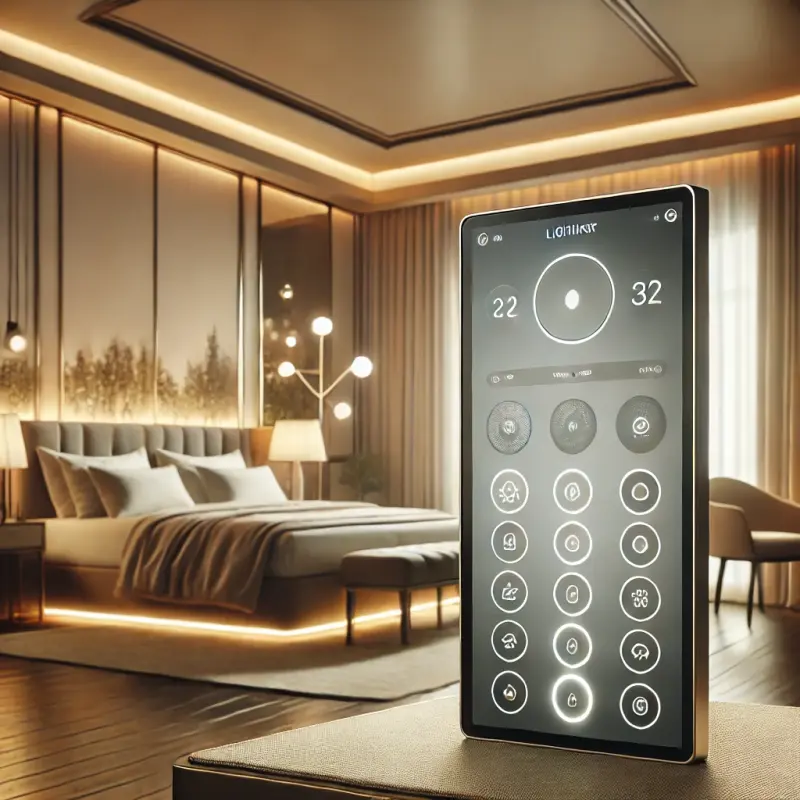Personalized Lighting Systems in Hotels: Enhancing Guest Comfort with Smart Technology

The hospitality industry thrives on creating memorable guest experiences, and lighting plays a significant role in achieving this goal. Personalized lighting systems have become a game-changer in modern hotels, allowing guests to tailor their environment to their preferences. From mood-setting ambiance to energy-efficient solutions, these smart systems enhance comfort and satisfaction while contributing to sustainability efforts.
In this article, we explore the impact of personalized lighting technology in hotels, its benefits for guests and hoteliers, and how it shapes the future of hospitality.
The Role of Lighting in Guest Comfort
Lighting is more than just a functional necessity—it affects mood, productivity, and overall well-being. For hotel guests, the right lighting can transform their stay, providing:
- Relaxation: Warm, dimmed lights create a soothing environment after a long day.
- Productivity: Bright, focused lighting supports work or reading tasks.
- Aesthetic Appeal: Dynamic lighting enhances the beauty of the room's interior design.
By offering guests control over their lighting preferences, hotels can cater to diverse needs and elevate the guest experience.
Key Features of Personalized Lighting Systems in Hotels
1. Intuitive Control Interfaces
Modern lighting systems include user-friendly controls such as:
- Touch Panels: Allow guests to adjust brightness, color temperature, and lighting modes effortlessly.
- Mobile Apps: Enable control through smartphones or tablets, offering remote access to lighting preferences.
- Voice Assistants: Integrate with systems like Alexa or Google Assistant for hands-free operation.
2. Scene Customization
Guests can choose from pre-set lighting scenes tailored to different activities:
- Relax Mode: Soft, warm light for unwinding.
- Work Mode: Bright, white light for concentration.
- Sleep Mode: Gradual dimming to promote better sleep.
3. Circadian Rhythm Support
Advanced systems synchronize lighting with natural circadian rhythms, adjusting intensity and color throughout the day to mimic natural light cycles. This feature enhances sleep quality and overall well-being.
4. Energy Efficiency
Smart lighting systems incorporate energy-saving features, such as motion sensors and automatic dimming, reducing energy consumption without compromising guest comfort.
5. Integration with Room Automation
Personalized lighting integrates seamlessly with other smart room features, including climate control, curtains, and entertainment systems, creating a cohesive and luxurious experience.
Benefits of Personalized Lighting for Guests
1. Enhanced Comfort
Guests can adjust lighting to suit their mood and activities, creating a home-away-from-home ambiance.
2. Increased Satisfaction
Tailored lighting options contribute to a more personalized experience, increasing guest satisfaction and likelihood of repeat visits.
3. Better Sleep Quality
Circadian lighting and sleep-friendly modes support restful nights, leaving guests refreshed and energized.
4. Reduced Eye Strain
Optimal lighting conditions prevent eye fatigue during reading, work, or screen use.
Benefits for Hoteliers
1. Energy Savings
Energy-efficient smart systems reduce operational costs, aligning with sustainability goals and improving profitability.
2. Competitive Edge
Offering cutting-edge amenities like personalized lighting differentiates hotels in a competitive market, attracting tech-savvy travelers.
3. Data Insights
Smart systems collect anonymized data on usage patterns, helping hoteliers understand guest preferences and optimize services.
4. Positive Brand Image
Eco-friendly lighting solutions enhance a hotel's reputation for sustainability and innovation.
Real-World Applications
1. Boutique Hotels
Boutique hotels use dynamic lighting to create unique themes for each room, offering guests a distinct and memorable experience.
2. Business Hotels
Hotels catering to business travelers incorporate work-friendly lighting modes, ensuring productivity and convenience.
3. Luxury Resorts
High-end resorts employ circadian lighting and immersive light shows to elevate luxury experiences.
Challenges and Solutions
Challenges
- Initial Costs: Implementing advanced systems requires significant upfront investment.
- Technical Expertise: Staff must be trained to manage and maintain smart lighting systems.
- Compatibility Issues: Ensuring seamless integration with other smart systems can be complex.
Solutions
- Scalable Systems: Start with essential features and expand over time.
- Vendor Support: Choose providers that offer training and technical support.
- Standardized Protocols: Opt for systems using universal communication protocols like Zigbee or Z-Wave.
The Future of Hotel Lighting Systems
1. AI-Driven Automation
Artificial intelligence will analyze guest preferences to provide even more tailored lighting experiences.
2. Renewable Energy Integration
Solar-powered smart lighting systems will reduce hotels' carbon footprints.
3. Holographic Interfaces
Futuristic, touch-free controls could enhance convenience and hygiene.
4. Smart Lighting for Wellness
Future systems may integrate with wearable devices to adjust lighting based on guests' biometrics, promoting relaxation or focus.
Conclusion
Personalized lighting systems represent a transformative shift in hospitality, blending technology with guest-centric design. By enabling control, customization, and energy efficiency, these systems enhance comfort, improve sustainability, and redefine luxury.
For hoteliers, investing in smart lighting is not just a trend—it’s a commitment to delivering exceptional experiences while meeting the demands of an eco-conscious future. As technology advances, personalized lighting will continue to illuminate the path to smarter, more sustainable hospitality.
Articles
Subscribe to our notifications to receive the latest and most interesting articles directly in your inbox.